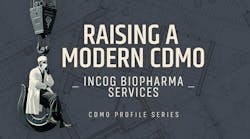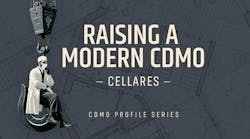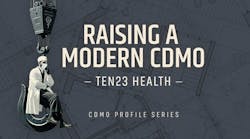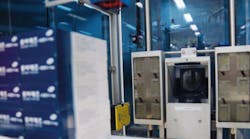[sidebar id=1] If behavior often speaks volumes, then the pharmaceutical industry is saying a lot lately in the way that it is responding to the social and economic forces that affect its markets and the potential commercial success of the drugs they develop and deliver around the world. It’s the Pharma industry’s voice, articulating its direction, its strategies and its aspirations using a familiar, but sophisticated commercial vocabulary learned over its long history.
Certainly the “Industry” speaks with many tongues, but its ongoing dialogue was recently articulated by thought leaders meeting and presenting at DCAT Week 2015. Celebrating its 125th year, the Drug, Chemical & Associated Technologies Association meeting may likely be one of the industry’s longest running events, attracting the leadership of Pharma’s top companies including CMOs and technology suppliers. Pharmaceutical Manufacturing was there, lobbying in the truest sense of the word at the famous Waldorf Astoria hotel in New York. While there, we took the opportunity to query some of Pharma’s most dynamic companies on what’s driving their strategic plans in the near term.
Who’s listening? Patheon’s CEO Jim Mullen is and very carefully, noting that the supply chain is growing more complex and that Pharma companies are outsourcing more work, but with companies with broader capabilities. “They’re trying to shrink the network of suppliers they’re using. They have a growing slice of products that require some kind of specialty capability. On the small molecule side, the estimate is [that] maybe a third of the pipelines out there that have solubility absorption issues. What does that mean? They need more specialty formulation technologies to solve these problems,” says Mullen. What is Patheon doing in response? “We keep building our technology base,” he says, citing the recent Agere Pharmaceuticals acquisition which in his words was “exactly aimed at that problem” of helping Patheon make drugs with better absorption rates for its customers.
Talking injectables, Mullen mentions that it’s been a challenging market to find high quality CMOs with reasonable capacity and flexibility to get the job done noting it’s a market that’s been really stretched over the last years: “Look at all the biologics coming along and biosimilars; there’s a lot of pressure in the injectable space.”
Indeed, and Graham Reynolds, vice president, Marketing and Communications, Delivery Systems for West Pharmaceuticals agrees. “There are a couple of major trends that I think are really driving West’s strategy. “First is the general growth in biologic drugs and in particular the newer molecules that are being developed [which] have their own challenges.” Reynolds explains some of those therapies may need to be self-administered by patients and this creates challenges of how to make them effective, safe, and as painless as possible for the patient. Reynolds notes that many newer injectable drugs tend to require higher dose volumes. “So what traditionally would be injected in a one mL syringe,” explains Reynolds, “now these newer molecules — because of the complexity — suddenly you have to deliver two mL or three mL or even more to make an effective dose.” That’s driving the development of newer delivery technologies, he says, “that will not only contain that volume of drug but deliver it in an appropriate time.” Reynolds says the evolution of plastic primary containers, syringes, etc., is certainly a driver adding that West understands some of the newer biologics are more sophisticated and that some molecules can interact with glass, thus prompting drug owners to explore the alternatives.
David Mayers, president, pharma services, for Canada-based WellSpring Pharmaceuticals, also hears the industry loud and clear when it comes to injectable medications, the rise of biologics and niche compounds. “From a CMO perspective,” says Mayers, “we’re seeing a lot of smaller orphan drugs, and we are doing a lot of work in orphan drugs — IMS validated that … with data from earlier in the [DCAT] conference. We find it is becoming much more the norm. The concept of these smaller organizations taking up a few products — we’re seeing a lot of change too,” explains Mayers. So from a CMO perspective, he notes, the industry is seeing a surge, in opportunity, because basically a number of companies are now either merging or switching and selling three or four of their products to somebody else.
CMOs and other Pharma contract services companies are adapting to answer the needs of larger Pharma. Mullen says to compete and excel Patheon needs to field everybody including companies with orphan drug indications, which tend to be smaller scale with smaller batch size runs.
West’s Reynolds explains “Pharma is always balancing risk against the reward of innovation, agreeing that the industry is striving to improve, working to understand the challenges of patient compliance and how they can better integrate supply chain partners into the drug development process.”
“I think some [Pharma companies] are doing a much better job of figuring out who to work with and who not to,” says Mullen, explaining that traditionally acquiring CMO support was managed as a procurement strategy, based on financials and available capacity among other things, and that “The pendulum has swung a little too far,” in that direction. “Procurement is important, but the technical aspects [involved in engaging a potential CMO partner] are equally important, and we need to have the technical experts on both sides coming together and sharing things.”
Industry’s talk of innovation is on Mayer’s mind as well. “I find that in the pharmaceutical industry, we talk about the concept of innovation. We are an interesting animal in that we (Pharma) are more innovative than almost anyone else and less innovative than anybody else.” But innovation just does not mean the same thing to the industry during this period of its history. “There isn’t the new molecule — there’s extension of things; there’s new dosage forms, biosimilars, etc. But the other piece that’s happening is we’re becoming much more sophisticated and innovative in how we manage our companies.”
As with these companies and others, they are listening carefully to what the Pharma industry’s saying, digesting what’s being “said” and turning it around to bring Pharma what it needs to remain competitive, while offering safe and affordable drugs.
Latest from Contract Manufacturing





